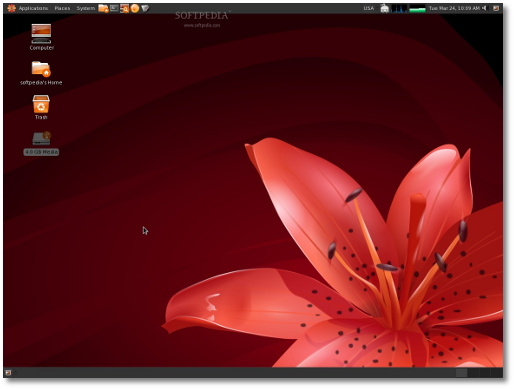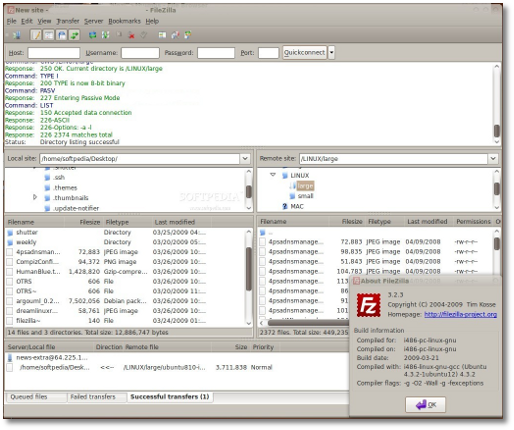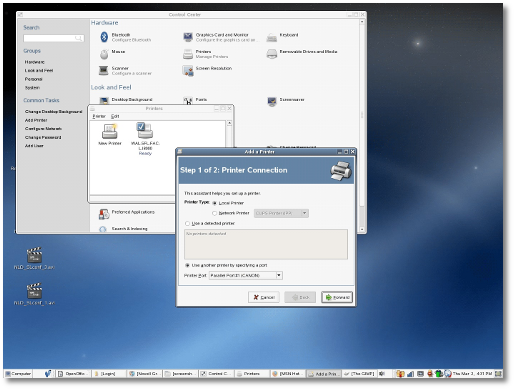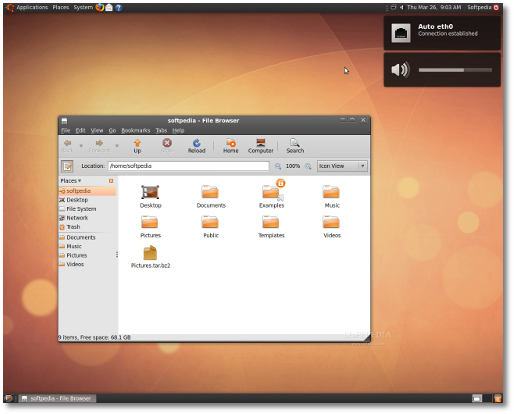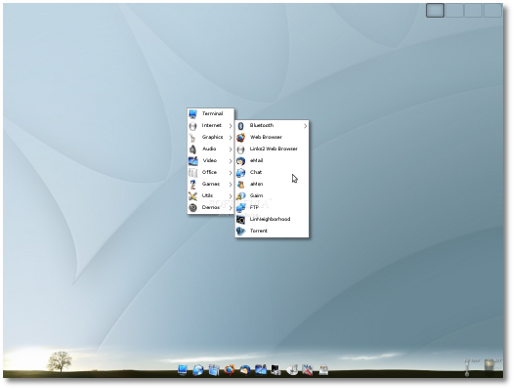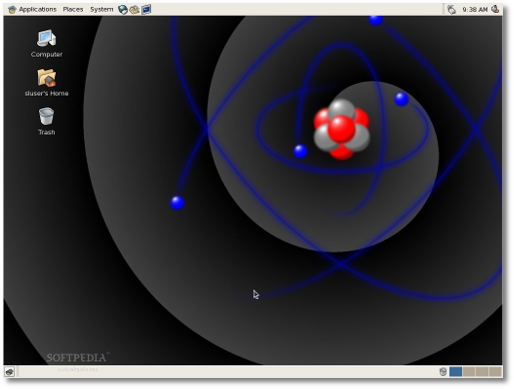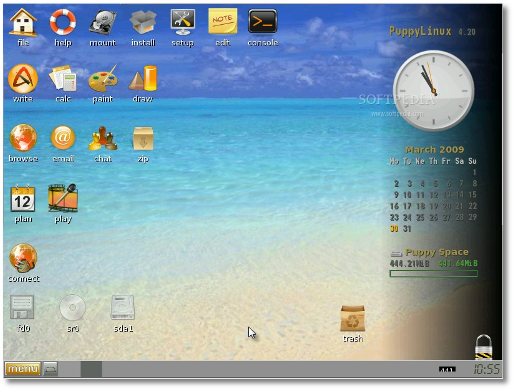Welcome to the 39th issue of Softpedia Linux Weekly!
This week's editorial talks about Linus Torvalds, the man behind the Linux movement. The "first look" article offers you a quick preview of the new Parsix 2.0r0 operating system, and the "Application of the month" for March 2009 is Filezilla. In the Linux distribution announcement section you will find the following releases: SUSE Linux Enterprise 11, Ubuntu 9.04 Beta, Elive 1.9.24, Scientific Linux 5.3 Live CD/DVD and Puppy Linux 2.4. In other news: Canonical announces Ubuntu Server training course; Linus Torvalds announces Linux Kernel 2.6.29, which includes the Btrfs filesystem; Linux Mint 4.0 reaches end-of-life on April 18th, 2009; Canonical needs your help to test the Suspend/Resume in Ubuntu 9.04. The weekly ends with the video clip of the week, the latest Linux distributions released/updated last week and the development releases.

Summary:

 Editorial: Linus Torvalds – One of the Greatest Men Alive? – by Daniel Pop-Silaghi
Editorial: Linus Torvalds – One of the Greatest Men Alive? – by Daniel Pop-Silaghi

Being 39 years of age, Linus Torvalds was born on the 28th of December 1969 in Helsinki, Finland. Though the fact that he graduated the Helsinki University with a Master's degree in computer science may not seem very interesting, you should know that the University's decision to hold a UNIX course during his years there was one of the things that led to the creation of the Linux kernel.
The course convinced Linus that UNIX was the best operating system out there and made him frantically look for a copy. Not having any luck, he eventually had to buy a cheap, standard 386 architecture PC that had MINIX pre-installed. Being a newsgroup addict, Linus hated MINIX's poor terminal emulation, a must for news reading, and
Though he modestly refuses to describe himself as a "good-doer" and claims that everything he's done he's done just for fun, it is clear that Linus had, has and will continue to positively impact many aspects of the world. Free and open-source software would have probably never reached the level of popularity that it knows today without Linus and his operating system. People all over the world, regardless of their financial status, are introduced to technology through Linux, schools can now teach children how to use computers without worrying about licensing costs and limitations, and small businesses can thrive by using free software. Servers, desktops, routers, set-top boxes, mobile phones, DVD players, GPS receivers, printers and many, many more embedded devices are brought to life using Linux.
The Time magazine included Linus Torvalds in the "60 Years of Heroes" feature next to people like Princess Diana, Yuri Gagarin or Nelson Mandela. Hero or not, Linus can also be considered a kind-hearted person, as he also launched a call for action on saving the Tasmanian Devil, plagued by a deadly cancer threatening to extinct the whole species, by replacing the Tux logo with Taz (the Tasmanian Devil disguised as a penguin).
Linux users are still generally regarded as being cranky and nerdy. Linus Torvalds is the ultimate proof against that myth, as a quick read through his occasional blog posts will definitely make you laugh. Laid-back, always smiling and very sincere, Linus Torvalds is also a pleasure to listen to in various interviews. Happily married and proud father of three daughters, he blows away yet another urban legend claiming that Linux users are bound to be forever lonely.
Linus Torvalds is one of the people who really helped shape the open-source world in a way that is seriously taken into consideration. Nowadays, with technology playing a crucial part in almost everything that surrounds us, all people should be equally able to access it and free software does just that. Though these days it's hard to believe that Linux will completely take over, it is very important to keep it "out there" as an amazing alternative and the community should continue its efforts in spreading Linux and free software everywhere they can. Thank you, Linus, for the Linux!
· From the article: The Live environment was responsive and functional; nothing special really so I started the install on hard drive process, which is a customized wizard that allows users to save a modified setup configuration for later use (cool!). Though the partitioner (GParted) had support for the EXT4 filesystem, I was quite disappointed to see that Parsix was only able to install on EXT3, ReiserFS or JFS partitions, so my previously formatted EXT4 one was reformatted to EXT3 before the installation started. But given the fact that EXT4 is still a new technology, it's somehow understandable that the developers chose to postpone the support for it. The installation didn't take too long, and in less than 10 minutes I was ready to reboot into the newly installed operating system.
I have mixed impressions about Parsix 2.0r0. It looks really good (I would use the default theme everyday), it's fast, easy to install, very, very light on resources and has many useful utilities, but the outdated default software packages and hard-to-install graphics drivers will keep it from becoming a really popular distribution. If you want to try something new, definitely take Parsix into consideration the next time you go distro-shopping.
Read the full article here.

 Application of the Month: FileZilla - The Only FTP Client You'll Ever Need
Application of the Month: FileZilla - The Only FTP Client You'll Ever Need
· At the end of March we awarded FileZilla the "Application of the Month" title. From the article: "Yes, I'm talking about an FTP (File Transfer Protocol) client. A quick Google search and the first result is "FileZilla." Though you can't blindly trust Google's suggestions, this time it got it right: FileZilla is the best FTP client out there. If you expect a hefty price tag attached to it, sorry to disappoint you. FileZilla is a free, open-source application licensed under the GNU General Public License."
Read the entire article here.
 Linux distributions announced last week:
Linux distributions announced last week:
 On March 24th, Novell announced the release of SUSE Linux Enterprise 11, an operating system created for modern data centers. SUSE Linux Enterprise 11 brings many new major improvements to both SUSE Linux Enterprise Server and SUSE Linux Enterprise Desktop. Two new extensions were added to improve productivity and reliability: SUSE Linux Enterprise Mono Extension and SUSE Linux Enterprise High Availability Extension. The first will allow users to run .NET-based Microsoft applications, while the second, a clustering solution, will ensure maximum uptime for mission-critical deployments.
On March 24th, Novell announced the release of SUSE Linux Enterprise 11, an operating system created for modern data centers. SUSE Linux Enterprise 11 brings many new major improvements to both SUSE Linux Enterprise Server and SUSE Linux Enterprise Desktop. Two new extensions were added to improve productivity and reliability: SUSE Linux Enterprise Mono Extension and SUSE Linux Enterprise High Availability Extension. The first will allow users to run .NET-based Microsoft applications, while the second, a clustering solution, will ensure maximum uptime for mission-critical deployments.
The SUSE Linux Enterprise 11 platform will be supported by major partner companies like Cisco, Dell, Fujitsu Siemens Computer, HP, IBM, Intel, Microsoft, NEC, Oracle and SAP AG. SUSE Linux Enterprise Server 11 supports swap over NFS (Network File System), a functionality that will drastically reduce application downtime. The package update stack was also improved to automate installing, removing, upgrading and configuring various software packages.

 On March 26th, Canonical announced the Beta version of the upcoming Ubuntu 9.04 (codename Jaunty Jackalope). As usual, we've downloaded a copy of it in order to offer you a nice screenshot tour of the release.
On March 26th, Canonical announced the Beta version of the upcoming Ubuntu 9.04 (codename Jaunty Jackalope). As usual, we've downloaded a copy of it in order to offer you a nice screenshot tour of the release.
What's new in Ubuntu 9.04 Beta? Well, a lot! First of all, the developers improved the boot process even further and now Ubuntu 9.04 Beta (with the EXT4 filesystem) will boot in under 20 seconds on a high-end machine! On our tests, here at the Softpedia labs, a brand new installation of Ubuntu 9.04 Beta with EXT3, installed on an old AMD Sempron 2800+ machine with 512 MB of RAM and an 80 GB IDE hard drive, boots in 21-22 seconds (from GRUB to the login screen). That means a 6-7-second drop from our last tests!
Download Ubuntu 9.04 Beta right now from Softpedia. Remember that this is a beta release and it should not be installed on production machines. It is intended to be used for testing purposes only!

 Also on March 26th, the Elive team proudly announced yet another development release of their GNU/Linux Live CD, Elive 1.9.24. Among various improvements and bugfixes, this new development version of Elive is now based on the stable version of the Debian 5.0 (Lenny) operating system.
Also on March 26th, the Elive team proudly announced yet another development release of their GNU/Linux Live CD, Elive 1.9.24. Among various improvements and bugfixes, this new development version of Elive is now based on the stable version of the Debian 5.0 (Lenny) operating system.
Highlights of Elive 1.9.24:
· Based on the stable version of Debian Lenny; · Improved Enlightenment 17 window manager; · Added the Reiser4 filesystem (available only as a kernel module); · Fixed the kernel headers issue in previous releases; · Added Scite as the default text editor; · Added the ability to preview FLV videos in Thunar; · Fixed the irritating pop-up message in MPlayer, if the audio drivers were outdated. Moreover, some hotkeys were added for the CLI version; · Improved the sensitivity of Macbooks' touchpad; · Fixed an installer bug, when executing integrity verifications on a machine with erroneous clock/time; · Added LVM in the installer; · Added RAID in the installer; · The Slovenian, Canadian and Swiss keyboard keymaps were improved; · The language can be selected when using unetbootin.
Download Elive 1.9.24 right now from Softpedia. Remember that this is an unstable release and it should not be installed on production machines. It is intended to be used for testing purposes only!

 On March 27th, Troy Dawson and Connie Sieh announced the availability of Scientific Linux 5.3 Live CD/DVD, which will run on both i386 and x86_64 processor architectures. Being a Live version, the system boots directly from the optical media it was written on, without touching the hard drive.
On March 27th, Troy Dawson and Connie Sieh announced the availability of Scientific Linux 5.3 Live CD/DVD, which will run on both i386 and x86_64 processor architectures. Being a Live version, the system boots directly from the optical media it was written on, without touching the hard drive.
Highlights of Scientific Linux 5.3 Live CD/DVD:
· Linux kernel 2.6.18-128.1.1.el5; · openAFS client 1.4.7; · Xorg 7.1; · 3D desktop effects through Compiz and AIGLX; · ALSA sound lib 1.0.17; · GNOME desktop environment 2.16.0; · KDE 3.5.4; · IceWM window manager; · OpenOffice.org 2.3.0; · The GIMP 2.2.13; · Mozilla Firefox 3.0; · Mozilla Thunderbird 2.0; · Evolution E-mail Client 2.12.3; · Support for read/write NTFS partitions through NTFS-3G; · The Gparted disk partitioning utility; · Reiserfs-utils; · Testdisk; · Partimage; · Ddrescue data recovery tool.
Download Scientific Linux 5.3 Live CD/DVD right now from Softpedia.

 Also on March 27th, the team behind the Puppy Linux project announced the release of Puppy Linux 4.2 (codename Deep Thought). Being a major release, Puppy Linux 4.2 brings a lot of new changes and improvements. While the ISO is still under 100 MB, there are now two window managers available, IceWM and JWM, including extra themes. SeaMonkey 1.1.15 is the default web browser and features the MonkeyMenu extension. A new addition comes in the form of Pwidgets: battery, clock, weather, calendar, RSS feeds, picture slideshows and others can be added on the desktop. For multimedia enthusiasts, the latest audio codecs are brought through AlsaPlayer and Pmusic and the Gxine fullscreen video player.
Also on March 27th, the team behind the Puppy Linux project announced the release of Puppy Linux 4.2 (codename Deep Thought). Being a major release, Puppy Linux 4.2 brings a lot of new changes and improvements. While the ISO is still under 100 MB, there are now two window managers available, IceWM and JWM, including extra themes. SeaMonkey 1.1.15 is the default web browser and features the MonkeyMenu extension. A new addition comes in the form of Pwidgets: battery, clock, weather, calendar, RSS feeds, picture slideshows and others can be added on the desktop. For multimedia enthusiasts, the latest audio codecs are brought through AlsaPlayer and Pmusic and the Gxine fullscreen video player.
Highlights of Puppy Linux 4.2:
· Puppy Control Panel; · gfx-boot, providing a better looking GRUB boot loader; · streamtuner, bringing internet radio to Puppy Linux; · Printing support through CUPS 1.4b2; · Xarchiver archive manager; · GPicView image viewer; · Glade, freeBASIC and tcl/tk programming tools; · Remaster Xpress re-mastering application; · New games; · Meebo instant messaging; · SeaMonkey Mail email client; · Psip Voice over IP client; · XChat IRC client.
Download Puppy Linux 4.2 right now from Softpedia.
· The success of the Ubuntu Training Program, combined with the growing popularity of Ubuntu Server Edition, led Canonical to announce, on March 23rd, a new course that exclusively focused on the server edition. Called "Deploying Ubuntu in the Enterprise Environment," the training program lasts five days and addresses intermediate-to-advanced enterprise system administrators working with Ubuntu desktops and servers. Read more about it here.

· None other than Linus Torvalds, the father of Linux, announced on March 23rd the immediate availability of Linux kernel 2.6.29, a version that brings initial support for the highly expected Btrfs filesystem. Btrfs is a brand new filesystem created by Chris Mason and designed to act like the ZFS or WAFL ones. When Btrfs will be stable, it will definitely replace the Ext filesystem! Read more about it here.

· Following the end-of-life announcement for Ubuntu 7.10 (Gutsy Gibbon), Clement Lefebvre announced on March 25th that Linux Mint 4.0 (Daryna) would no longer receive software updates and security/critical fixes, starting April 18th, 2009. Therefore, all Linux Mint 4.0 users are urged to migrate to the Linux Mint 5 (Elyssa) with Long Term Support or the brand new Linux Mint 6 (Felicia)! Read more about it here.

· The Ubuntu Kernel Team wants to make sure that the Suspend/Resume function will work properly in the upcoming Ubuntu 9.04 (Jaunty Jackalope). Therefore, if you have Ubuntu 9.04 Beta installed on a PC or laptop, you can help test the functions using a script, and then send the results to the developers. Read more about it here.
SUSE Linux Enterprise Desktop 11 Demo
· Because Novell released SUSE Linux Enterprise 11 last week, we decided to show a demo with it. The video has 5:11 minutes and it was posted by DAMInstant. Enjoy!
· PC/OS (OpenServer) 8.4 · Indra 0.2 · Noys 0.8 · ZoneMinder Virtual Appliance 0.1 · ZorOS 3.4 · Ubuntu MID Edition 9.04 Beta
 Distributions Updated Last Week:
Distributions Updated Last Week:
· Astaro Security Linux 7.401 · Absolute Linux 12.2.3 · TurnKey Drupal 5 Live CD 2009.03-hardy-x86 · TurnKey Drupal 6 Live CD 2009.03-hardy-x86 · Turtle Kevux 0.8.11 · Vinux 1.4 · TurnKey Ruby on Rails Live CD 2009.03-hardy-x86 · AFU Knoppix 6.0.1 · TurnKey Django Live CD 2009.03-hardy-x86 · TurnKey Joomla Live CD 2009.03.2-hardy-x86
· g:Mini 3.0 RC1 · Moblin 2 Alpha 2 · Musix GNU+Linux 2.0 Alpha 1 · Easy Peasy 1.1 RC2 · MythBuntu 9.04 Beta · Ubuntu Studio 9.04 Beta · Edubuntu 9.04 Beta · Xubuntu 9.04 Beta · Kubuntu 9.04 Beta · Ubuntu Netbook Remix 9.04 Beta · Ubuntu Server 9.04 Beta · Trixbox 2.8 Beta · Clonezilla LiveCD 1.2.1-50 · ZeroShell 1.0 Beta 11
See you again next Monday, April 6th, for another issue of Softpedia Linux Weekly.
The Softpedia Linux Editorial Team.
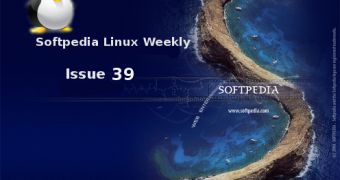
 14 DAY TRIAL //
14 DAY TRIAL // 
